Outlandish, a Black-Owned Outdoor Store in Brooklyn, Forges Its Own Path
Growing up in the shadow of REI, Outlandish is finding new ways to reach outdoor customers in NYC.
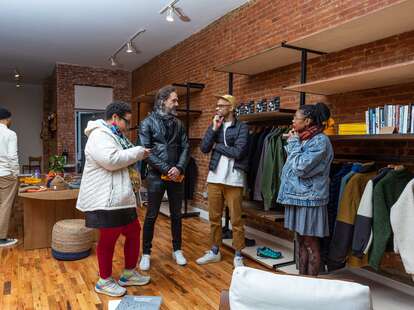
“Our biggest fear is that customers see us as a little REI,” says Ken Bernard, who co-founded Outlandish, the fourth Black-owned outdoor gear store in the country.
Bernard understands the outdoor retail ecosystem as well as anyone, having worked as a floor lead at the REI store in SoHo—just four miles from the Outlandish storefront in Crown Heights—for five years. “People love the idea of REI being a Co-Op, the return policy, and 10% kickback,” he explains. “We knew we had to set ourselves apart.”
To do so, Bernard says, “We’ve worked hard to tap into the community, have real conversations with customers, and stay fresh. If we just sell the same things as REI, we’re done. If we sell the same things as another speciality shop, we’re not actually special. So we do a lot of collabs, like recent limited drops with Ciele and Salomon.”
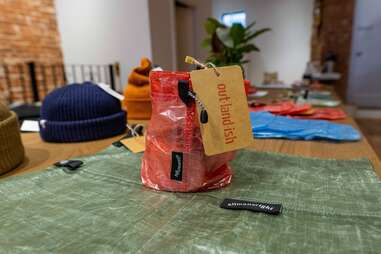
Bernard got to know Benje Williams, his co-founder, while Williams was moonlighting under Bernard in the footwear department at REI. Both were looking for their next opportunity and started discussing ways to work together. “We got close while working in the belly of the beast,” says Williams. “After a month, we had coffee, and it just went from there.”
In early conversations, Williams and Bernard discussed an array of opportunities, eventually landing on an outdoor gear shop. “There already were a lot of great nonprofits getting diversity outside on hikes,” says Williams. “At least a dozen organizations in the NYC area alone. We saw the work being done and didn’t want to be redundant, so we decided to go a different direction to help people get outside.”
Williams, who comes from a nonprofit background, saw value in building a business that depended on the community around it. Together they sketched a business model based around a community hub, unique products, and hands-on customer support. “We wanted to tap into an ecosystem of people excited about the outdoors who aren’t finding what they need at REI,” says Williams. “Our thesis was that if we could find all these pockets of people and invite them in, we wouldn’t have to depend on grants and subsidies.”
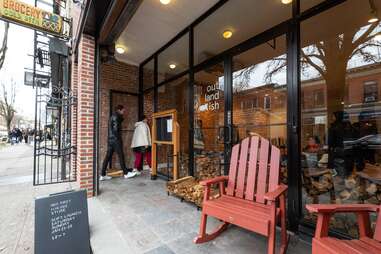
Bernard is grateful for his time working at REI, because it helped him become more confident talking about the outdoors to strangers. “Working there helped me realize that I do fit in and belong. The SoHo store is the most diverse store in the Co-op and equipped me with the tools to go a step further. It showed us opportunities we could pursue and needs that were fully being met.”
While REI has a good ethics track record and a widely loved gear return policy, they’re not exactly a mom and pop endeavor, reaching a record $3.9 billion in sales last year. At the same time, many independent outfitters are struggling in a saturated market, while competing with online sellers like Amazon. Despite the odds, Outlandish has found a way to differentiate itself: starting local.
Born and raised in Brooklyn, Bernard has met a lot of people in New York who want to get outside, but have never had the opportunity. “We saw a physical space as the missing link. Outlandish is centrally located, a place where people can meet up and feel a sense of community. The space helps us educate customers and host events. That’s the value of a small shop like ours over bigger stores.”
“We wanted a location near our customers, in their neighborhood,” says Williams of the Outlandish storefront in Crown Heights. “Some brands don’t have diversity in their ethos so they have to think about it a lot, but we don’t think about it at all, because it’s our background. It’s natural for us to make everyone feel comfortable, invited, and welcomed into the store.”
Inside, Outlandish is an aggregation of a wide swath of products. “It’s the intersection of fashion and function,” says Williams. “You don’t have to put your personality aside to go outside.”
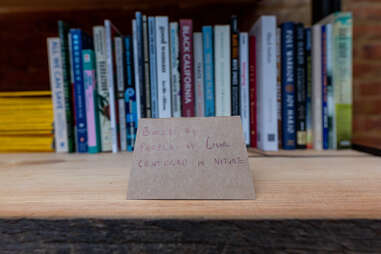
Williams and Bernard started by reaching out to what they call “anchor” brands like Patagonia, Black Diamond, and Arc’teryx, to build a baseline of trust and credibility with customers. But their secret sauce has been adding “discovery” brands that other retailers don’t carry, often because they are niche.
Many of these discovery brands, like allmansright, are local businesses that they met organically. “That’s the great thing about New York, it’s easy to meet people in the street” says Bernard, “REI doesn’t carry small brands because they don’t fit their supply chain requirements, but they are many of our best sellers. For example, a local sock company is currently outselling both Darn Tough and Smartwool.”
While curating the right products helps Outlandish bring new people in the door, relationships are what keeps them coming back. “We have personal conversations with all of our customers, getting them set up with the right gear and sharing the story of the brands they are buying. That’s the real value,” says Williams. “This creates a meaningful connection to the products they buy, and a reason to come back and give us feedback. We have regulars who come into the shop multiple times each week just to chat.”
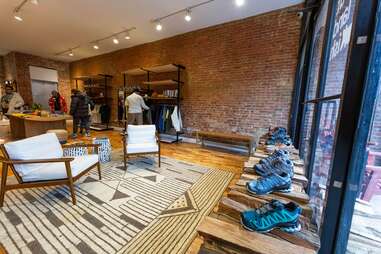
As just the fourth Black-owned outdoor store in the country, Outlandish has learned a lot from its predecessors. “We have a call with all three of them every six weeks, to chat about business strategy. It’s the gift of the curse of being so few,” says Williiams. “They’ve all been really helpful as we’ve built the business. We shadowed in their stores and visited the Outdoor Retailer expo with Jamicah from Slim Pickins.”
Williams says a lot of the strategy they learned was basic—negotiating terms with manufacturers, size of inventory, how to get discounts from brands—yet collectively crucial for success. “A lot of one-off lessons that add up to a lot. We wouldn’t be where we’re at without their mentorship.” From these lessons, Williams and Bernard gained a lot more confidence and “felt less like the new kids on the block.”
Still, brick-and-mortar retail remains challenging. “Being honest, online shopping is more convenient,” says Williams. “We try to not overly preach about supporting small businesses, but foot traffic keeps the doors open. Even our regulars don’t fully understand how important every sale is to us.”
“We feel hopeful about the way forward, but it’s going to be an uphill battle against the big retailers and online shopping,” says Bernard. “It’s sad to see small stores closing down around the neighborhood. Without shops like ours, New York would just be Starbucks and Whole Foods and Shake Shack. It wouldn’t be quirky and special. You’d lose the character of the block.”